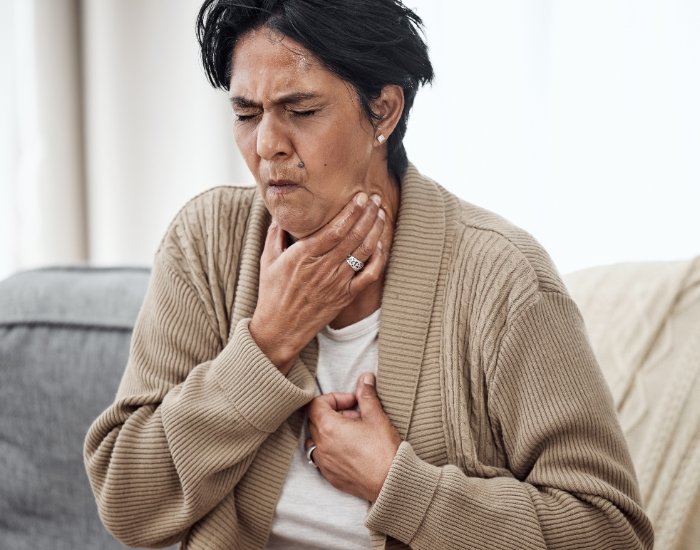Depression is a type of psychological condition characterized by a continuous sense of melancholy and losing enthusiasm. This mood condition causes us to be unhappy or uninterested in life all of the time. It is also, thankfully, controllable. There is no long-term treatment for depression. Our symptoms may gradually improve, but our disease will not. It has an impact on how we feel, believe, and behave, and can develop into a wide range of emotional and physical issues. Depression may need lengthy therapy. However, with proper care and maintenance, we can achieve remission and live a long and healthy life.
Depression comes in many forms.
Depression can vary in severity from minor, transient melancholy to severe, chronic depression that appears to last forever. There are several forms of depression, and depressive features are present in a number of illnesses. Anxiety that lasts longer than two weeks and interferes with your ability to function might be an indication of depression. The foregoing are some of the more frequent kinds of depression.
◉ Depressive Psychosis. Psychosis can occur in persons who are suffering from serious depression. This can include schizophrenic tendencies. Approximately 20% of persons with serious depression also experience psychotic signs. To be recognized with depression, one must experience a depressed state that lasts at least 2 weeks.
◉ Perinatal depression. Depression that arises during or after pregnancy is known as perinatal depression. The so-called “baby blues” impact as many as 80% of mothers. Experts say that the identical drop in estrogen and progesterone that occurs following giving birth may make certain women more vulnerable to postpartum depression.
◉ Bipolar Disorder. Mania is a symptom of bipolar disorder, which is characterized by moments of unusually heightened mood.
◉ Cyclothymic disorder. The peaks and valleys of the cyclothymic disorder are gentler than those of bipolar I or bipolar II illnesses.
◉ Seasonal depression. Symptoms of seasonal depression occur in delayed fall or early winter and fade in the warmer months of spring and summer. In the United States, about 5% of adults suffer from SAD. It usually begins in early adulthood. Seasonal depression has yet to be identified as a particular cause.
Depression symptoms in children and adolescents.
If we suspect our kid is depressed, we have to get assistance as soon as possible. Emotional peaks and troughs are ordinary for children, just as they are for adults. Depression and anxiety frequently can coexist in children. Children’s mood swings are normal as they grow and develop, but depression is different. Although the indications and depressive symptoms in children and teens are similar to those in adults, there are significant distinctions to be made. The longer it continues, the more likely it may impair the child’s life and become a lengthy issue.
The following are indications of depression in children that parents should be aware of:
✔ Always being irritated or dissatisfied
✔ At school, there are behavioral issues.
✔ Becoming uninterested in activities that they actually liked
✔ Minimal energy levels or an overall feeling of exhaustion
✔ Grief or a sense of despair.
✔ Not being able to focus
✔ Talk about feeling regretful or worthless.

How is depression in children diagnosed?
We must see a healthcare practitioner if we suspect our child is suffering from depression or anxiety that has lasted for at least two weeks. We must rule out any physical causes for our child’s problems and ensure that he or she receives appropriate therapy. There are no tests that can be used to determine whether or not someone is depressed. The interview process with the mother and the father should be part of a mental health assessment. Furthermore, a psychiatric evaluation may be useful in confirming the diagnosis and determining alternative treatments. Educators, acquaintances, and peers can help to demonstrate that the child’s indications of childhood depression are evident during his or her separate tasks and are a significant shift from past behavior.
Symptoms of depression in older people.
As we become older, depression may strike anyone. Clinical depression is prevalent in the elderly. That isn’t to say that isn’t unusual. Around 6 million Americans aged 65 and up suffer from late-life depression. However, only 10% of those who are diagnosed receive therapy. Depression is linked to an increased risk of heart disease and mortality from illness in older individuals.
The indications of senior depression can impair a person’s levels of energy, food, relaxation, and motivation in job, interests, and relations, among other things. Depressive symptoms are often shown uniquely in older persons.
◉ Despair or a sense of despondency.
◉ Avoid meals, missing medications, ignoring basic cleanliness, having difficulties getting or maintaining sleep, oversleeping, or daytime drowsiness.
◉ Use of alcohol or other drugs increases
◉ Slow down their approach.
◉ Suicidal thoughts
◉ Memorizing power decreases.
Depression in elderly people has a variety of causes.
Solitude and hopelessness
Being alone, having a shrinking circle of acquaintances owing to deaths or migration, having limited mobility due to sickness, or losing driving privileges are all factors that can lead to depression.
- Issues with health. Sickness and incapacity, persistent or acute pain, cognitive deficits, and negative body image as a result of operation or illness are all factors that can lead to depression.
- Fears. Fears of death or dying, as well as financial difficulties, health concerns, or abuse or neglect, are examples.
- Loss of loved ones that have occurred recently. The loss of a spouse or partner, as well as the death of friends, family members, and pets, are all major causes of depression among older individuals.
Sadness, Grief, and Mourning are not the same as depression
Although grief and depression have common characteristics, they are two separate experiences that must be distinguished for numerous reasons. It’s critical to understand the distinction between natural grieving and clinical depression so that the mourning individual can seek the help or therapy they need.
Grief is a normal reaction to loss that requires physical, intellectual, emotional, behavioral, and religious reactions. Each person’s grief is different, although it can involve any of the following:
- Taste changes
- Disturbance of sleep
- Tiredness
- Concentration problems
- People and circumstances are avoided.
- Suicidal thoughts or behavior
- Anger, despair, and isolation
- Feelings of despondency
- Hygiene is neglected.
- Loss of enthusiasm for work or other activities
Depression is a medical disease that, if left untreated, can be fatal. For at least two weeks, these symptoms must be present virtually every day. The existence of the following is one of the diagnostic criteria:
- Mood swings or a low mood
- Loss of enjoyment or interest in hobbies
- Taste loss and substantial weight reduction
- Sleeping excessively or insufficiently
- Actions are slow
- Fatigue and energy depletion
- Feelings of inadequacy and remorse
- Indecisiveness, inability to concentrate
- Suicide or death thoughts on a regular basis
- Significant functional impairment
Depression-Related Risk Factors
Depression may strike anybody, including those who appear to be in reasonably good health. Depression can be caused by a variety of reasons, including:
Biochemistry:
Variations in some brain chemicals may have a role in symptoms of depression.
Genetics:
Depression is an inherited problem that can run through generations. If one identical twin develops depression, the other has a 70% probability of developing the condition at a certain point in their lives.
Personality:
People with poor self-esteem, who are caught off guard by anxiety, and who are gloomy usually tend to be more likely to suffer from depression.
External factors:
People who are constantly exposed to domestic violence, ignorance, torture, or economic hardship may be more susceptible to depression.







0 Comments